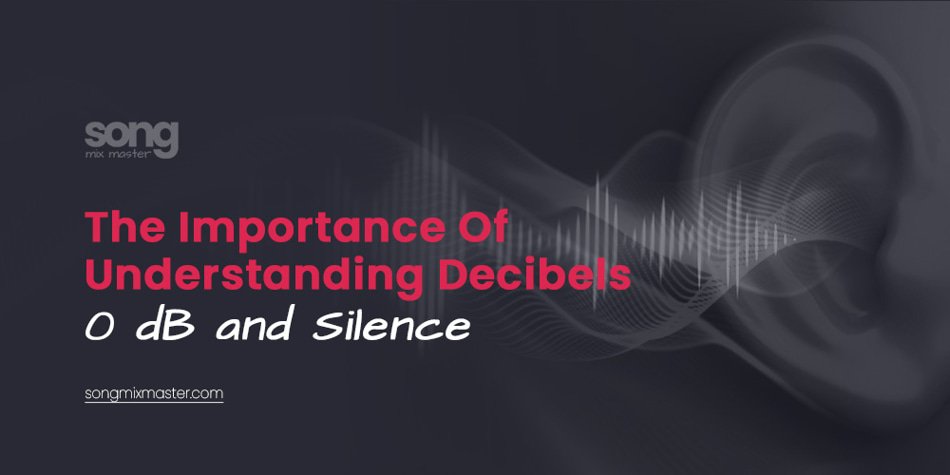Tutorials
Understanding Decibels: The Truth About Silence and 0 dB
In mathematics, we use the number 0 to refer to a null quantity. However, despite popular belief, the absence of noise, or silence, does not equate to 0 dB. Here, we will explain one of the most widespread acoustic myths and clarify what the figure of 0 dB really means.
What is a Decibel?
First, it’s important to note that the unit of measurement is the bel, but for convenience, we use the decibel, as 1 bel equals 10 decibels. The bel was introduced by Alexander Graham Bell and was initially used in telegraph lines and to measure sound relationships.
Today, decibels are also used in acoustics and telecommunications.
Is One Decibel a Little or a Lot of Noise?
Before analyzing what happens at 0 dB, it’s essential to understand how decibels work and what an increase or decrease on the scale implies.
Imagine we have a speaker that emits 70 dB, but we want an output of 90 dB. Is a 20 dB difference significant?
Yes, it is! Decibels follow a logarithmic scale, which means that increasing by 10 decibels multiplies the power by 10, and increasing by 20 dB multiplies the power by 100.
In summary, to achieve 90 dB of noise, we would need 100 speakers emitting 70 dB. So, our single speaker generates 100 times less power than what we need.
0 dB and Silence
Our hearing operates logarithmically, which is why everything related to acoustics is measured in decibels. When we encounter a value of 0 dB, we should never interpret it as silence. Instead, 0 dB represents the threshold of human hearing.
Values of 0 dB and those close to it imply the perception of very faint sounds. On the other hand, the upper threshold for human hearing is around 140 dB, where the perception is one of pain.
Here is an image showing different types of noises, their decibel equivalents, and how harmful they can be to us:

As mentioned earlier, the human hearing threshold ranges from 0 to 140 dB, with values ranging from less harmful to more harmful to our health. These values are approximate as they depend on each individual, and can vary slightly.
Over time, we tend to lose the ability to hear high frequencies, meaning the highest-pitched sounds. Additionally, hearing loss is also linked to our daily exposure to high noise levels.
Therefore, more regulations are being implemented at the European, national, and local levels to minimize damage to our hearing. Nowadays, these regulations control acoustic environments, from the noise levels to which workers are exposed during their shifts to the emission levels generated in neighborhoods, among others.

We need to become more aware of the risk we take when exposed to high sound pressure levels, as it’s part of our daily lives. Our ears contain very sensitive transducers that allow us to hear.
These transducers are called hair cells and come in two types, inner and outer. Humans have about 3,500 inner hair cells and around 12,500 outer hair cells.
These hair cells are organized in three rows by size, and when stimulated, they generate a chemical component that transmits electrical impulses to the acoustic nerve and auditory nerve.
When exposed to high sound pressure levels, hair cells can be damaged, and they cannot regenerate, leading to hearing loss!
The Importance of Understanding Decibels
Understanding decibels (dB) is fundamental for anyone involved in music production, from sound engineers to artists. The concept of 0 dB and the common misconception that it represents silence can have significant implications for recording sessions and overall sound quality.
Sound engineers must monitor sound levels accurately to maintain consistent quality. Misinterpreting 0 dB as complete silence can lead to overlooking background noise, which needs to be addressed in recordings.
Knowing that 0 dB represents the threshold of human hearing ensures that engineers set appropriate levels for recording, mixing, and mastering, avoiding distortions and preserving audio fidelity.
Also read: Mastering at the Right Loudness for Spotify, Apple Music, YouTube, etc.


Disclaimer: Any references to any brands on this website/webpage, including reference to products, trademarks, brands and companies, are provided for description purposes only. We don't have any association with or endorsement by these brands or companies. Some of the links on our blog may be affiliate links. This means if you click on these links and make a purchase, we may earn a commission at no extra cost to you.
Need Professional Mixing & Mastering?
You may also like to read...
Vocal Warm-Up: Preparing for a Pitch-Perfect Performance
Analog Vs. Digital Summing – Uncovering The Audio Debate
Mastering Advanced: Tube EQ, Compression, and Harmonic Excitation
What is Dithering in Audio and How It Works
How to Widen Your Mix: Tips for Stereo Imaging
Understanding Audio Compression: Types and Techniques